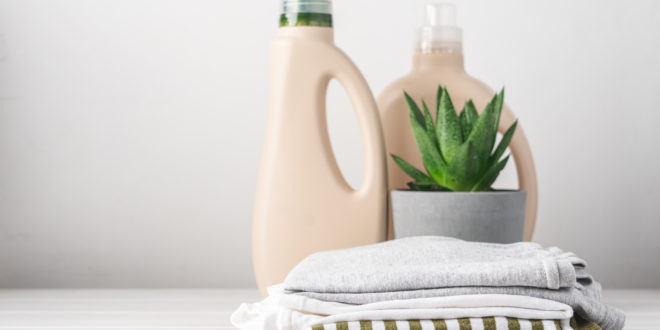Your washer and dryer are the lifeblood of a home, with most people doing laundry at least twice a week and some washing a load daily. These machines we rely on to keep our clothes clean and smelling nice are massive energy wasters. Even if you already own Energy Star appliances, neglect and misuse can negate their efficiency.
Fortunately, with some minor adjustments to your habits, you’ll once again reap the benefits of your energy-saving appliances. These 12 tips are easy to incorporate into your routine and will save you energy and money.

1. Wash on Cold
A significant portion of the energy costs in your washing machine goes to heating the water for warm and hot cycles. Cold water will clean everything but the most soiled items and prolongs the life of your clothing by decreasing fading and shedding. By reducing the amount of loose fibers, cool water contributes far less to micro-plastic pollution than hot water.
2. Do Full Loads
This one might take a little extra planning, but running a whole load just for that pair of dress pants you need in the morning is a waste. Your washer uses around the same amount of energy no matter the load size. Maximize savings by running full loads without overfilling — check your manual for the recommended size.
3. Use Longer Spin Cycles in the Washer
Putting sopping wet clothing in your dryer will cause higher dry times and more energy spent on heating it. Choose a longer or faster spin cycle in the washing machine to combat the problem. You won’t waste any extra water or heat, and your dryer won’t have to work as hard.
4. Adjust the Water Heater
Most water heaters are set to a standard of 140°F which is unnecessary for most households and presents a real risk of scaldings and burn injuries, especially in homes with kids and older adults. Lowering the temperature to 120°F will save you money on all your hot water needs, including laundry.
5. Try High-Efficiency (HE) Detergent
Check your washing machine’s user manual to see what detergent it recommends. HE detergents create fewer suds than traditional options, so they’re the ideal choice for water-efficient washers. Otherwise, you may need to run multiple rinse cycles, wasting water and energy.
6. Skip the Sanitary Cycle
Sometimes it’s necessary to run your machine on warm or hot, especially with heavily soiled clothing. However, you should typically steer clear of the sanitary cycle on your washer. It heats water extra hot, which will hurt the longevity of your clothing and waste a significant amount of energy.
7. Install Solar Panels
Not all energy-saving methods are in the laundry room. Installing a renewable energy source like solar panels will make you less reliant on electricity or gas, and after the initial costs, they’ll save you money each year.
8. Dry Similar Weights Together
Heavy materials take much longer to dry, so they should be in a load of their own. Otherwise, each batch of laundry will take the amount of time needed to dry the heaviest items like towels or jeans. If you separate them, light loads will only take a little while to dry and can conserve more energy in the long run.
9. Maintain Your Lint Filter and Dryer Duct
Forgetting to maintain your lint filter and dryer duct is a major fire hazard and can rack up your energy costs. Both items help filter the air through your machine and dry the load faster, so keeping them clean will reduce the time it takes to finish.
10. Switch Clothes While the Dryer Is Warm
If possible, wait a while to do your laundry until you have enough to do at least two loads. You can save energy by placing your second round into the dryer while it’s still warm from the first. Your machine won’t need to work as hard to heat up and get going.
11. Replace Old Appliances
When it’s time to replace your old appliances, take your time to research the most energy-efficient possibilities. Washers and dryers with Energy Star certification undergo rigorous testing to ensure their quality and capabilities.
12. Skip the Dryer Altogether
Heat is brutal to your clothes and your energy costs. An ideal way to avoid this problem is to skip the dryer. Hang clothes on a line outside if you have the room, or use an indoor clothing rack instead. Alternatively, you could run an air dry cycle on your dryer, which uses far less heat and energy.
Wear Clothes Longer
The best way to save energy while doing laundry is to reduce the number of loads you do each week. You can wear clothes that aren’t soiled more than one time. Underwear, swimsuits and socks need laundering after each use, but jeans are typically good for 4-5 wears. Washing your clothes less will add to their longevity and save significant amounts of energy.



